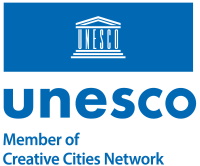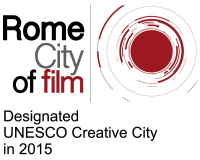In early July 2017, the complex of Cinecittà was purchased, in an important operation of reacquisition, by Istituto Luce-Cinecittà, a company owned entirely by MEF under the supervision of MIBACT. Exactly 80 years after their foundation, the historic film studios in Via Tuscolana in Rome come back under public control, as the object of one of the most important projects to revitalize the film industry in the history of Italy.
According to the stimulus plan, the activities most involved in the management of the film studios and those linked to production, will merge with the functions of ” public interest” historically promoted by Istituto Luce-Cinecittà to support classic and contemporary Italian cinema (such as conservation and dissemination for the Historic Archives, the distribution of debut and second Italian films funded by the Ministry, the production of documentaries, the promotion abroad of classic and contemporary Italian cinema) and will be expanded with important new strategic activities (such as the future MIAC – Italian Audio-visual and Cinema Museum), creating a new hub, a point of reference for the entire audiovisual industry and a strategic tool for its development.
With this operation, the Istituto Luce Cinecittà will also take responsibility and provide the expertise for managing the film studios, for building the sets, for the executive production process in making audio-visual works for cinema and television, series, and the development of new media.
The fundamental activities of the Cinecittà Digital Factory (the digital hub of the Studios) will be incorporated into Luce-Cinecittà’s new mission: from post-production services to the restoration of films (a laboratory for analogical processes serving the conservation of the immense legacy of films and archives will be re-opened), to the conservation of productions by third parties.
Istituto Luce-Cinecittà will also take over the competences that were previously handled by the Cinecittà District Entertainment company: exhibitions, events, organization and handling of services for touring the site, in addition to the ample range of activities involved in the production and distribution of publications, audiovisuals and merchandising branded Cinecittà.
All these activities will work together to enrich the central role of the Istituto Luce-Cinecittà, in collaboration with the associations of film and television producers, MISE and ICE, in the internationalization of our audio-visual industry, and the effort to bring international productions into Italy.
One of the cornerstones of this stimulus plan is the MIAC – Italian Audio-visual and Cinema Museum – a museum dedicated to representing the history of Italy to citizens, schools and tourists, through the audio-visual and photographic legacy of the Archivio Storico Luce and the many other archives including the Teche Rai. In addition to its permanent exhibition and temporary shows, the MIAC museum will document the technological evolution of the film professions throughout the 120 years since cinema was invented.
MIAC will also feature a laboratory for film conservation and restoration, a working laboratory that visitors may view as they make their way through the museum, that will make it possible, in the digital era, to preserve the art of working with film and to perform restoration work based on the original negatives, to pass down skills and expertise that might otherwise be doomed for extinction. And finally, thanks to the collaboration of the partners in Rome City of Film, the museum will organize training and educational workshops for adults and children.

